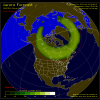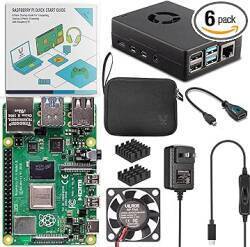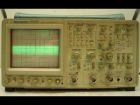
Amateur Radio — KC9RG
Amateur Radio
Amateur radio includes HF QRP operation — low-power but still long-distance two-way communication on the high-frequency bands using CW or continuous-wave signalling. In other words, Morse Code getting through when voice modes simply cannot, with a lot of kilometers per watt.
What's on the air? Refer to my overviews of the radio spectrum, tables of frequencies used by all the different services, and a list of powerful medium-wave AM broadcast stations that can be received across much of North America and beyond.
Many amateur radio operators use FM repeaters on the 144–148 and 420–450 MHz bands, colloquially referred to by approximate wavelength as 2 meters and 70 centimeters. I have some modifications for some of the older Icom transceivers.
Speaking of working on things, maybe you want to build some oscilloscope test probes or repair a Tektronix 2445A oscilloscope. Or fabricate circuit boards, wind toroidal inductors and transformers, or other design and construction projects.
HF QRP
Low-power but still long-distance communication on the HF bands, using CW (Morse Code).
HF QRP operation — Low-power CW transceivers for the40m, 30m and 20m amateur bands


 Morse
Morse Code Build a QRP RF 50Ω
Load and Power Meter A Simple Audio Tone
Control Circuit Surface-mount technology (SMT) construction
the NC2030 QRP HF transceiver 9:1 Unun HF Transformer for a
Multi-Band Random Wire Antenna Rhombic antennas
Classic designs for UHF & microwave Small HF antennas
Shortened doublet designs for 10.1 and 14 MHz J-pole antennas, also known as
End-fed half-wave Zepps Balanced line impedance
and radiated power Fort Tuthill
Transceiver QRP Kits
and Parts
SDR or Software Defined Radio with a Raspberry Pi
Modifications for the Icom IC-2SAT, IC-229H, and IC-3220 VHF/UHF Transceivers
Many years ago, I posted a few articles to USENET on how to modify the IC-2SAT and IC-229H 144-148 MHz FM transceivers for wide-band receive. And no, I don't know any more about the topic now than I did back then! But here is what little I do have on mods for these two Icom transceivers.
|
IC-2SAT modification Part 1 |
Part 1 describes measurements of the sensitivity of the Icom IC-2SAT across the newly expanded receive range. |
|
IC-2SAT modification Part 2 |
Part 2 describes the details of the modification itself. |
|
IC-229 modification |
The third one describes how to modify the Icom IC-229, and tells what to expect for results, including aviation band sensitivity. |
|
Modifications for the Icom IC-3220 VHF/UHF FM transceiver |
The IC-3220 is designed to cover both the
2m and 70cm amateur bands.
Learn how to expand the receive coverage to:
118.136 MHz AM 136-174 MHz FM 400-479 MHz FM |
Other amateur radio resources:
N5DUX's collection of references, both articles and books PG1N's collection of QRP transceiver, receiver, and transmitter projects for 160m through 13cmService manual archives: bama.edebris.com
ARRL: QST archive 1915-present! "This Is Ham Radio" 1960s video "The Hams' Wide World" 1960s video
Repeater directory Grid square maps 73 magazine archive 1961–2003
Huge archive of radio magazines including 73, Ham Radio, Monitoring Times, Popular Communications, Short Wave Radio, Short Wave Radio, and many more
Construction and Repair
Propagation and Frequencies
The Radio Spectrum for Beginners:ELF, HF bands, VHF & UHF, 1 GHz & up, microwave/radar bands Radio Frequencies:
Amateur, HF broadcast, Aeronautical, Maritime, Standard time & frequency, beacons & other utility stations Powerful Medium-Wave Radio Stations in North America, Central America and the Caribbean Propagation:
Live reports of propagation Geomagnetic conditions


HFCC shortwave (HF) broadcast frequency assignments World Radio-Television Handbook updates AM (MW) broadcast news AM (MW) broadcast lists by frequency and location US & international frequency assignments International broadcast schedules
License databases: FCC/US: amateur & broadcast FCC/US: all others Australia New Zealand
Scanner frequencies by state and city: cityfreq.com radioreference.com

